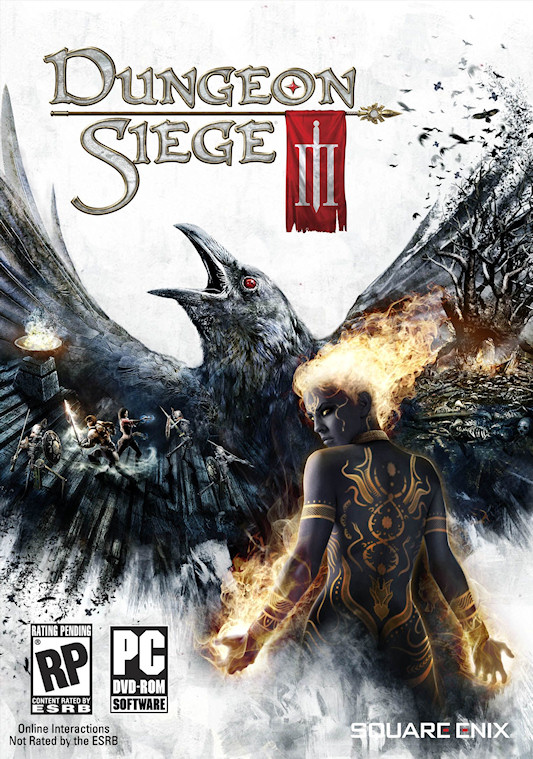Dungeon Siege III Preview
-
Category: PreviewsHits: 17392

Article Index
Page 3 of 5
Boss and lieutenant (mini-boss) fights are of particular importance in an action RPG, and I'm happy to report that there is no shortage of them in Dungeon Siege III. You'll know when you encounter either type, as a health bar will show up in the middle of the screen and a glowing aura will appear around the larger-than-life monster. This aura isn't just for looks, either. When the team went to battle a massive spider called Palefang that was inhabiting Shadowrift Cavern, its aura imbued a haste effect on all of the smaller spiders within it. Combined with the bite, lunge, and projectile attacks that Palefang was making use of, the 10+ minute battle looked very difficult and even forced our demonstrators (including project director Rich Taylor) to comment that balancing was still an ongoing process. It was during this boss fight that I picked up on a few interesting points. First, some bosses are vulnerable and resistant to particular attacks - Palefang, for example, was immune to stun and would simply become dazed for a short period of time when a stun attack was used. Secondly, there is no inherent health regeneration of any kind. If it exists at all, it's clearly only activated through talents, proficiencies, or equipment bonuses. Thirdly, all the enemies in the game have a static level and associated difficulty. Therefore, if you're having trouble taking down the standard or boss enemies in a region, you may want to backtrack to gain additional experience or purchase some new equipment before pushing forward.
Somewhat surprisingly, inventory management isn't handled by the grid system that we saw in the original titles or other popular RPGs (including the upcoming Deus Ex: Human Revolution). Instead, all of the equipment you pick up or purchase is categorized by slot and then displayed as a sorted list with the highest gold value item in that category shown at the top. Hovering over any of the items in the list shows you a statistical comparison to what you currently have equipped, so it should be a fairly quick process to figure out which items aren't worth carrying around.
If you decide that an item will never be used, you can either haul it back to the nearest merchant or immediately transmute it into gold. The former route will obviously net you a better profit, but if you want to press on through a dungeon and don't want to take the time to visit a merchant just to free up some inventory space, then transmuting is a better choice than simply dropping an item (keep in mind that there is no packmule or similar pet this time around). To give you an idea of what sort of returns to expect from the process, I transmuted some boots with a gold value of 30 and ended up receiving 3 gold. It's not much, but it's better than nothing.
Speaking of gold, it's worth mentioning that you simply walk over any gold that's littering the ground after defeating a group of enemies or smashing a handful of barrels. On occasion, you'll receive a gold bar as loot, in which case you have to actually pick it up to add its worth to your gold amount (a small bar that I found was worth 143 gold, for example). I really didn't get to play enough of the game to get a sense of the game's economy and how much of a role gold will end up playing, but I did notice that some merchants even sell high value unique items, so my guess is that every gold piece will be coveted.


